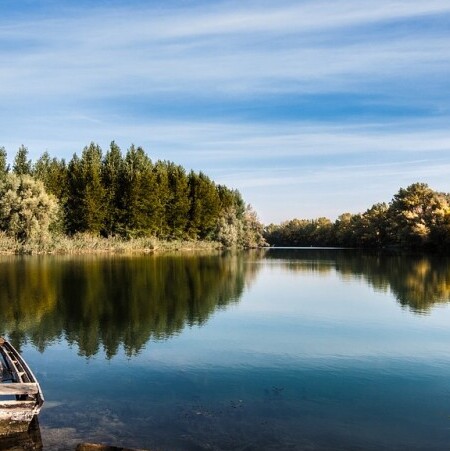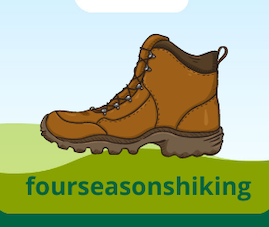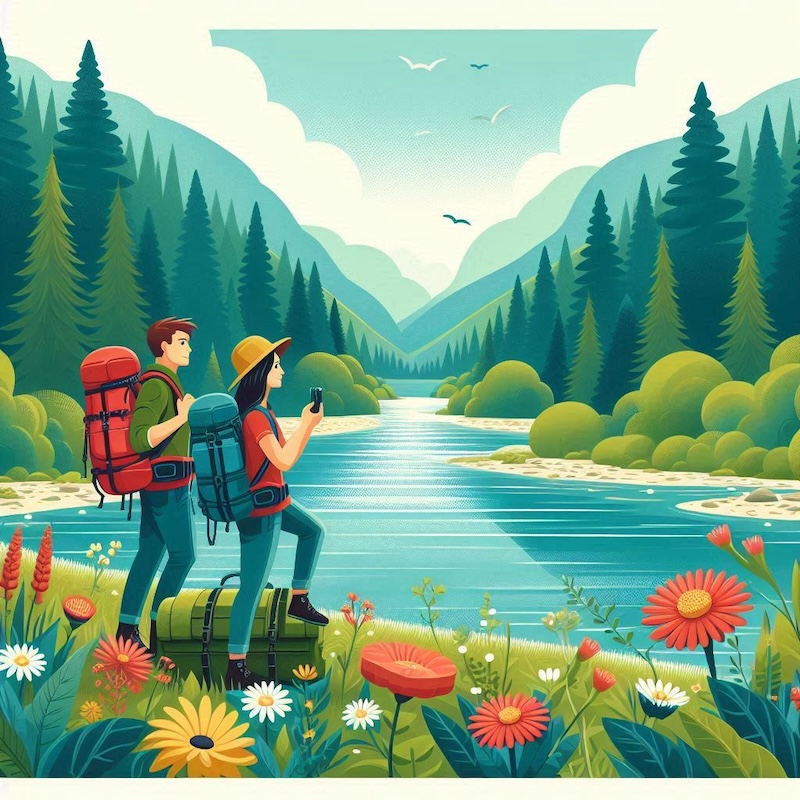Hiking often brings the thrill of nature and the challenge of navigating through various terrains. River crossings, in particular, can be both exciting and perilous. Understanding why proper techniques are essential can prevent accidents and ensure a safer hiking experience.
Accidents related to river crossings are more common than many realize. According to statistics, many hiking-related injuries are due to falls in rivers and streams. Misjudging the depth or strength of the current can lead to serious accidents. Fast-moving water poses a danger even if it doesn’t appear deep.
Preparation and awareness are key. Researching the area before your hike pays off. Knowledge about recent weather patterns, snowmelt, or any changes in the water level can make a huge difference. A river that seems manageable can quickly turn dangerous after a rainstorm, so it’s important to stay informed.
The impact of river conditions on safety can’t be overstated. Water levels can rise unexpectedly, and strong currents can sweep away even strong swimmers. Plus, the water might be much colder than expected, which can lead to hypothermia. Being well-prepared can help mitigate these risks and make your river crossing safer.
Prioritizing safety through proper technique and preparation transforms risky crossings into manageable challenges. Don’t underestimate the importance of proper planning and technique. By understanding the risks and preparing accordingly, you’ll be better positioned to enjoy your hike without unnecessary dangers.
Assessing the River: Key Factors to Consider Before Crossing

Safety in river crossings starts with keen observation and assessment. Knowing the river’s characteristics and surrounding conditions helps select the safest spot to cross.
Water depth and flow rate are primary considerations. Always gauge how deep the water is before attempting to cross. Use a stick, trekking pole, or visual assessment to assess areas where the river bed is visible. Even if shallow, fast-flowing water can be more dangerous than deeper but slower-moving water.
Entry and exit points are crucial. Look for calm, wide sections where the current is slower. Avoid narrow, fast-flowing spots or areas with significant drop-offs. Envision your crossing route, both the entry on your side and the exit on the other. Knowing your path reduces uncertainty and enhances safety.
Weather conditions play a significant role. Weather is dynamic; a sunny start can shift to rain, swelling river water levels rapidly. Always check forecasts before setting out and remain vigilant for changes. Finding an alternative route is often better if the river seems unsafe due to weather conditions.
Assessing obstacles and natural aids in advance can also help. Look for rocks, logs, or stable platforms in the river that can act as stepping stones or support. Natural aids make crossing less strenuous and more controlled, reducing the risk of slips and falls.
Remember to take your time during the assessment. Rushing can lead to missed details and increased risk. Evaluate each factor carefully. Taking a few extra minutes to consider these elements can differentiate between a safe crossing and a hazardous ordeal.
Personal Gear Essentials: What You Need for Safe River Crossings
Choosing the right gear is crucial for a safe and successful river crossing. The right equipment helps you navigate the waters and prepares you for unexpected situations.
Footwear plays a significant role. Sturdy, well-fitted shoes or sandals with good grip are essential. Avoid slippery soles that could increase the risk of falling. Specialized water shoes or hiking sandals with secure straps are excellent choices, providing traction and stability.
In compliance with the FTC guidelines, please assume the following about links and posts on this site: Any/all of the links fourseasonshiking.com are affiliate links of which I receive a small compensation from sales of certain items.
Support gear can make a huge difference. Trekking poles offer extra balance and stability. They help gauge water depth and test the river bed’s solidity before each step. A sturdy pole can be your best ally in swift currents.
In some situations, ropes may be necessary. A length of sturdy rope can be a lifesaver, particularly in group crossings. Ensure everyone knows how to use it effectively and practices safe techniques, such as securing one end to a stable anchor point before crossing.
Life vests or flotation devices are another consideration, especially in deeper waters or for less confident swimmers. They provide an added layer of security and peace of mind.
Clothing choices matter, too. Opt for quick-drying and insulating materials that keep you warm even if you get wet. Avoid cotton, as it holds water and takes longer to dry, increasing the risk of hypothermia.
Prioritize packing a dry bag for essential items. Keeping electronics, a first aid kit and spare clothing dry is vital.
Being well-equipped transforms river crossings from potentially risky endeavors into more controlled and manageable challenges. The right gear adds layers of safety and boosts confidence, letting you enjoy your adventure with peace of mind.
Crossing Techniques: Step-by-Step Guide to Safe River Navigation
Tackling river crossings safely hinges on using the right techniques. Understanding these methods can enhance safety and confidence, whether you’re crossing alone or with a group.
For solo crossings, take your time. Face upstream, lean slightly into the current, and use a trekking pole for balance. Move sideways, one step at a time, ensuring each foot is secure before shifting your weight. If you’re carrying a backpack, unbuckle the waist and chest straps. This ensures you can quickly shed the pack if you lose footing.
Group crossings require coordination. The strongest person should go slightly upstream, forming a line or holding hands to provide mutual support. Communicate clearly and move together, ensuring everyone maintains solid footing. Staying close enhances stability and reduces individual strain.
Natural aids like boulders, logs, or gravel bars can provide stepping stones and support. To ease your crossing, use large rocks or logs that are already stable against the current. Test each step for stability before committing to it.
In deeper or stronger currents, consider techniques like the “buddy system.” Two hikers crossing side-by-side, arms linked or using a rope, add an extra support layer. This technique helps maintain balance and reduce the impact of the water flow.
For any crossing, keep a calm and focused mindset. Panic and haste increase the risk of accidents. Take steady, measured breaths, stay focused on each step, and listen to your instincts. If a crossing feels unsafe, finding another way is usually best.
Understanding and practicing these river-crossing techniques can make a significant difference. The right approach ensures that you navigate the waters with confidence and security.
Emergency Preparedness: What to Do When Things Go Wrong
Despite careful planning, emergencies can happen during river crossings. Preparing for the unexpected can turn a potentially life-threatening situation into a manageable challenge.
Start with basic first aid knowledge. Knowing how to treat cuts, sprains, or hypothermia is essential. Carry a well-stocked first aid kit tailored to your journey’s specific needs. Include items like bandages, antiseptic wipes, and thermal blankets.
Strategies for self-rescue are vital. If swept away, try to stay calm and on your back with your feet pointed downstream. This position helps protect your head from impact with rocks or debris. Use your arms to steer towards the shore or calmer waters.
Assisting others in distress requires clear communication and quick action. Assess the situation before jumping in to help. Extend a pole or rope to the person if possible instead of entering the water yourself. This provides them with something to grab and keeps them on stable ground.
Hypothermia is a serious concern in cold waters. Recognize the signs, such as uncontrollable shivering, confusion, or stumbling. If you suspect hypothermia, remove the person from the water, remove wet clothing, and wrap them in dry, warm layers. Offer warm, non-alcoholic fluids if they’re conscious.
Reflect on past scenarios and learn from them. Every experience provides valuable lessons, whether a full-blown emergency or a minor mishap. Discuss these with your hiking group to reinforce safety measures and improve future preparedness.
Learning from Experience: Stories and Lessons from Seasoned Hikers
Experienced hikers have valuable insights that can help novice and intermediate hikers improve their river-crossing skills. Listening to their stories provides practical lessons and reassures us that even the most prepared adventurer can face challenges.
One hiker recalls a near-miss incident in which misjudging a river’s power led to losing footing. They emphasized the importance of not underestimating even seemingly shallow waters. This story was a strong reminder to always respect the river’s strength and use a trekking pole to test the depth and current before crossing.
Another story involves a group that successfully crossed a treacherous stream with the buddy system. Despite heavy rain causing the waters to swell, their coordinated efforts ensured everyone crossed safely. This experience underscored the effectiveness of group strategies and clear communication in overcoming natural obstacles.
Interviews with seasoned hikers consistently highlight preparation as a key theme. Before setting out, they stress researching trail conditions, weather forecasts, and water levels. Personal anecdotes reveal that even the smallest piece of equipment, like a sturdy stick or proper footwear, can dramatically change the outcome of a crossing.
Listening to these experiences builds a knowledge community where successes and mistakes offer learning opportunities. Sharing stories and tips helps create safer and more prepared hikers, fostering a culture of caution and respect for nature’s unpredictability.
Ultimately, these lessons from seasoned hikers instill a sense of humility and preparedness, encouraging us to approach river crossings with the right mindset and tools. By absorbing their wisdom, we enhance our skills, boosting confidence and safety on every trail.


Hey Lonnie,
Thanks for this excellent article on techniques for river crossings! My wife and I hike a lot, but I have to admit I avoid river crossings at all costs—unless it’s over a bridge! 😂 Your insights are invaluable, especially the tips on assessing the river and choosing the right gear. I appreciate how you stress the importance of preparation and awareness. Who knows, someday I might be forced to utilize these techniques! Your expertise really shines through, and I love how you share stories from seasoned hikers. Keep up the fantastic work; I look forward to reading more articles from you!
– Opa
I agree that avoiding river crossings is a wise choice, especially when there is a danger that could cause injury and even death.
Sincerely, Lonnie
I appreciate this information on river crossings while hiking since we will be traveling soon into the mountains and expect to do some hiking. Safety is a key priority and learning about navigating river crossings is essential. With the proper awareness and preparation, we will feel much more confident on our hiking adventure. I see the importance of assessing the river before proceeding. Appreciate the information on the personal gear and the step-by-step guide. You have provided much information to ensure a safe trip.
River Crossings Can be dangerous, and I hope the article helps.
Sincerely, Lonnie